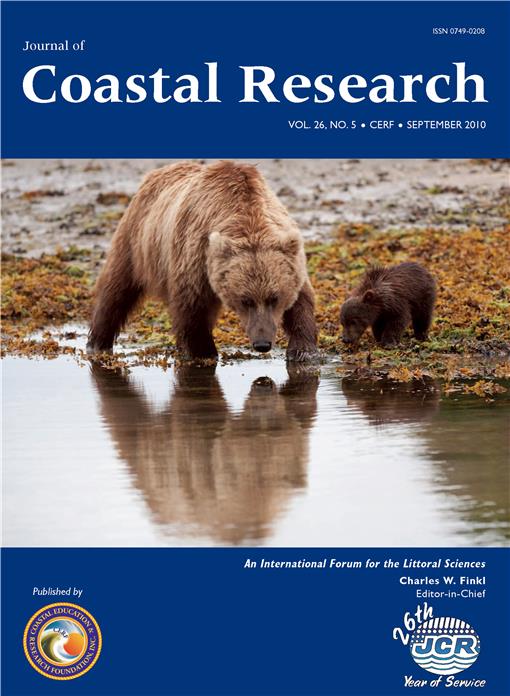The geochemical association of some trace metals (Fe, Mn, Ni, Cu, Cr, and Pb) were sequentially extracted from bulk sediments of the Chilika lagoon, India. The low elemental concentration, except Pb, in the exchangeable phase suggests poor availability to bottom dwellers. However, slightly higher abundance of Pb in the exchangeable phase at station 4 (9.9%) and station 6 (9.5%) is mainly related with waste from major fishing jetties. The carbonate-bound phase reflects heavy metal distribution of detrital origin along with biological decomposition in the lagoon. A relatively higher percentage of Mn in the reducible phase is attributed to the flocculation of its colloids. The concentrations of Cu, Ni, and Pb show their higher affinity to the organic-bound fraction. The absolute metal concentrations in the residual fraction was Fe > Mn > Ni > Cu > Pb > Cr, which reflects the predominance of physical weathering, a high erosion rate, and a high sedimentation rate in the lagoon. According to Risk Assessment Code, Pb, Cr, and Mn at almost all sites remain in the medium-risk category and can pose some environmental problems, mainly to the benthic community. Multivariate statistics (i.e., factor analysis, FA) was applied to the data set of geochemical fractionation of heavy metals in sediments of a coastal wetland. In this study we present the usefulness of the FA technique for evaluation and interpretation of a large, complex metal fractionation dataset and the apportionment of pollution sources and factors, with a view toward better information on chemical processes occurring in brackish environments. The roles of textural characteristics, organic precipitation, oxy-hydroxide formation and the processes of flocculation and adsorption into fine sediments in different geochemical phases were evaluated. The interpretation of the distribution of metals in different phases related to the relative location of sampling and the environmental characteristics of the fluvial as well as the lagoonal environment.
How to translate text using browser tools
1 September 2010
Application of Factor Analysis in Geochemical Speciation of Heavy Metals in the Sediments of a Lake System—Chilika (India): A Case Study
Unmesh Chandra Panda,
Prasanta Rath,
Satyanarayan Bramha,
Kali Charan Sahu
ACCESS THE FULL ARTICLE
Chilika lake
factor analysis
India
sediment
sequential extraction
Trace metals





